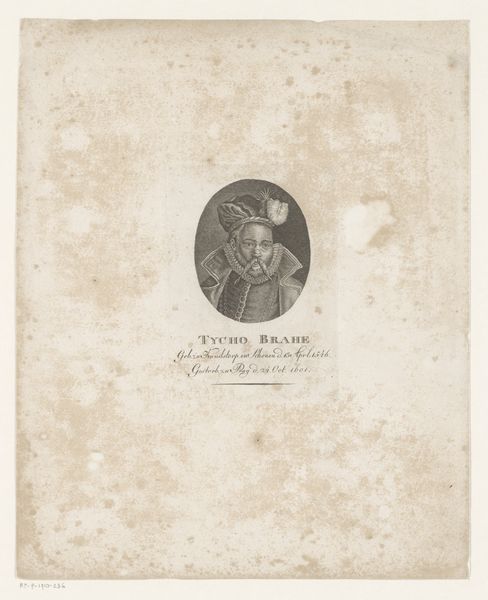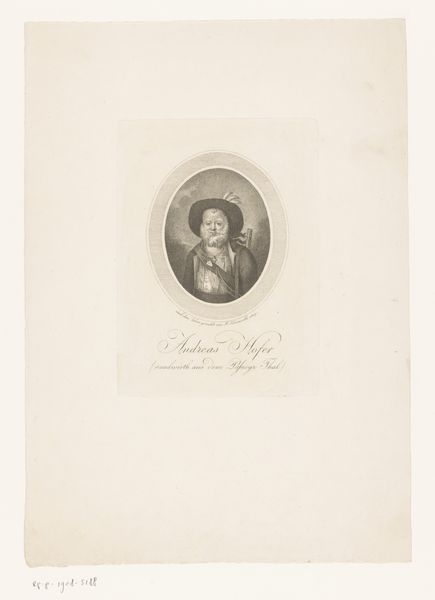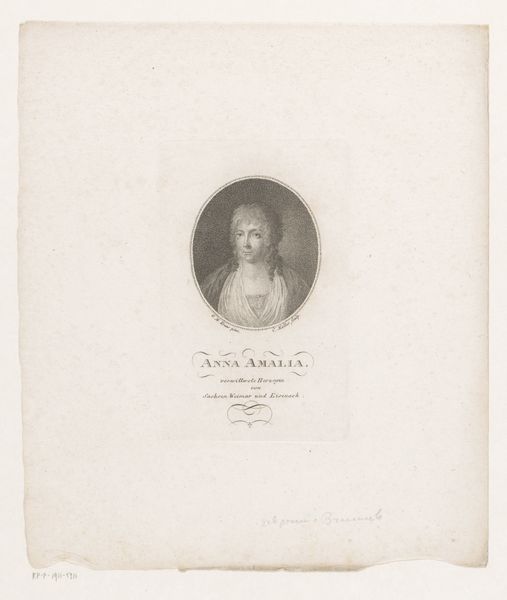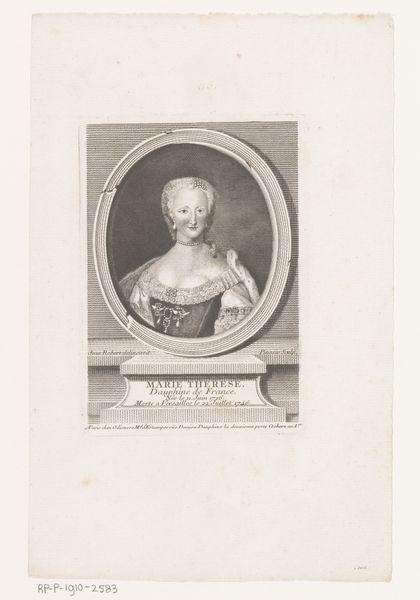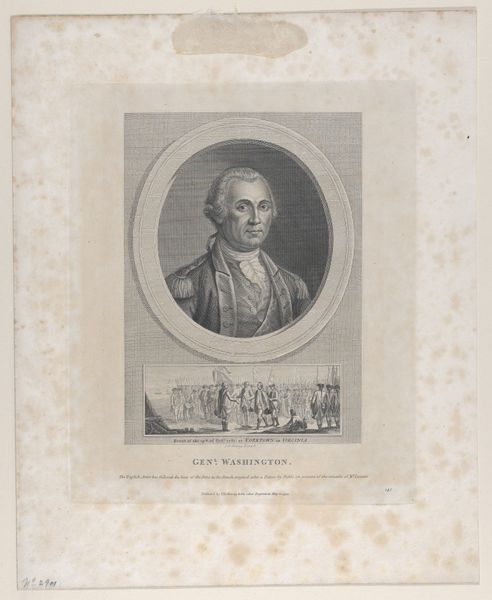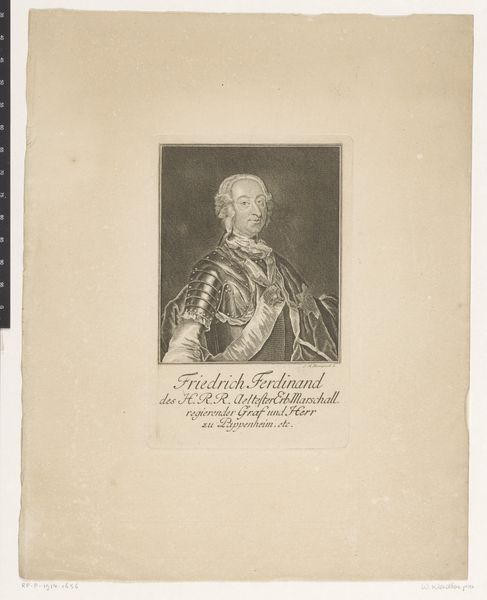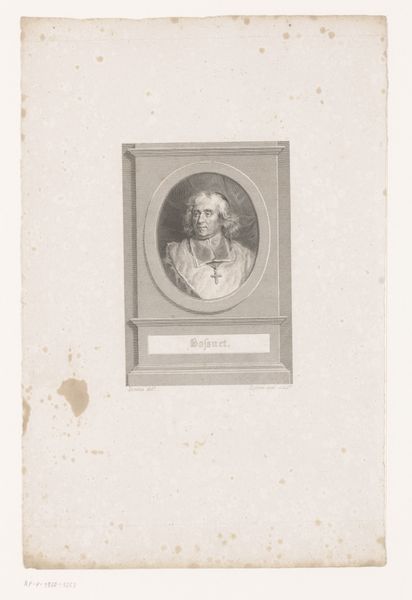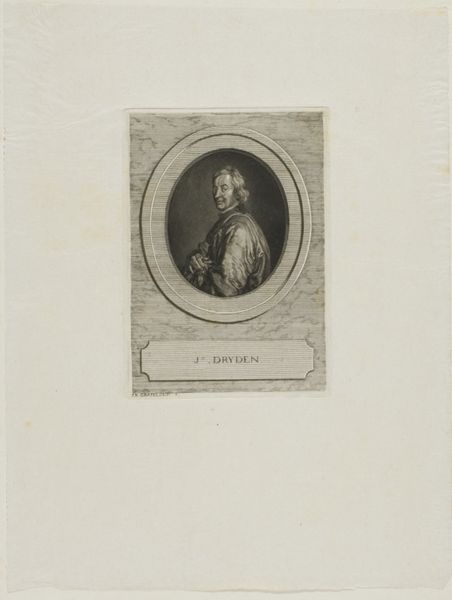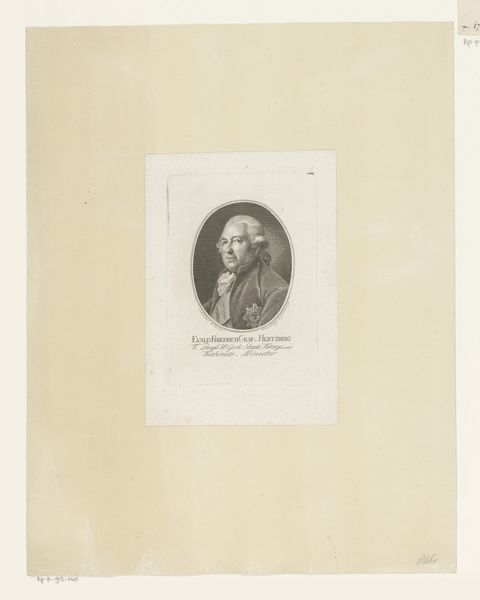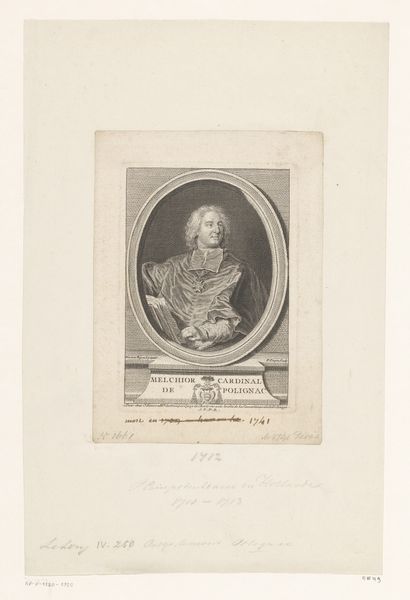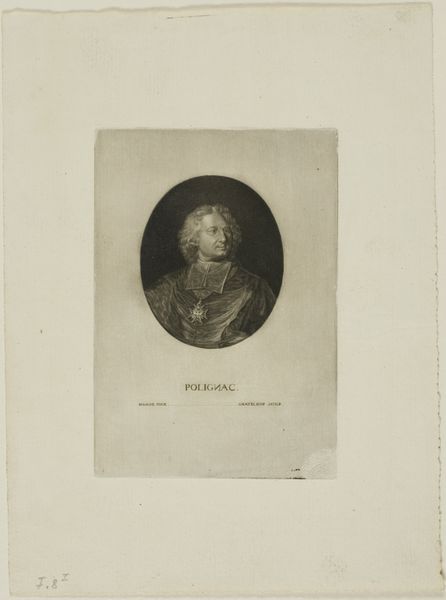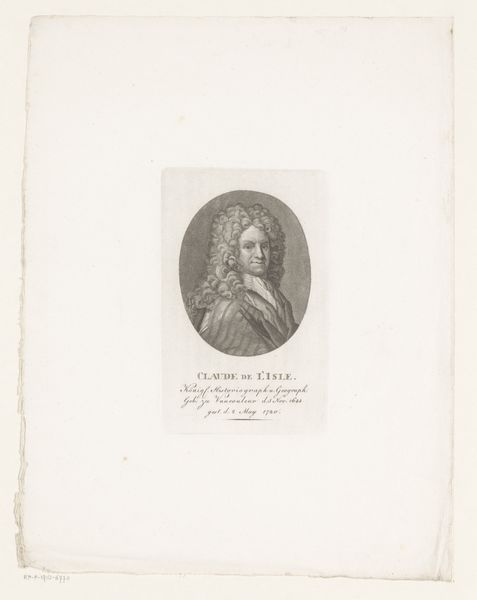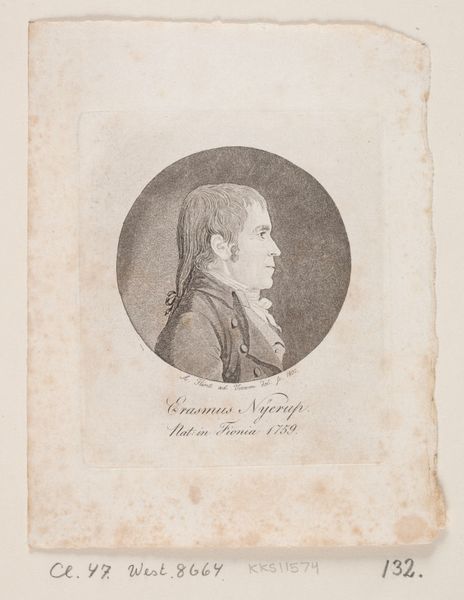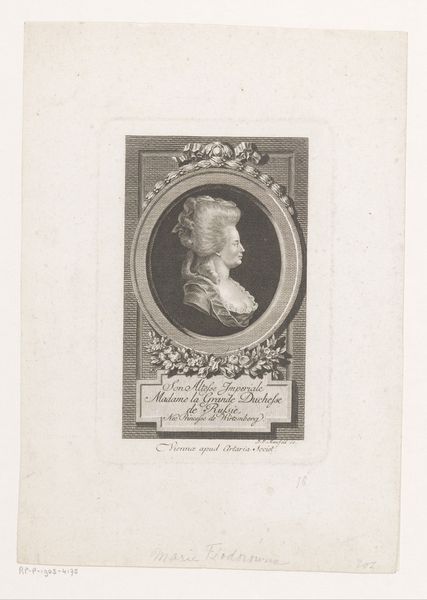
print, engraving
#
portrait
#
neoclacissism
# print
#
figuration
#
line
#
history-painting
#
academic-art
#
engraving
Dimensions: height 173 mm, width 123 mm
Copyright: Rijks Museum: Open Domain
This is an anonymous portrait of Andreas Hofer, likely created shortly after his execution in 1810. The composition immediately draws the eye to the sitter, framed by an oval that constrains the figure. The artist uses delicate engraving to render texture and depth, creating tonal variations within a limited palette. Light and shadow are employed to model Hofer's face and clothing, granting the image a sense of realism. This meticulous detail contrasts with the smooth, flat background, enhancing the subject's prominence. The portrait employs a semiotic system in which the depicted items - a large brimmed hat, rifle and crucifix - signify Hofer’s identity as a Tyrolean leader and devout Catholic. The image thus functions as a symbolic representation, aimed at constructing and communicating a particular image of Hofer. The careful construction of this image is crucial, transforming a historical figure into a symbol of resistance. This portrait serves as a reminder of how art shapes historical narratives and cultural memory through its formal qualities.
Comments
No comments
Be the first to comment and join the conversation on the ultimate creative platform.
